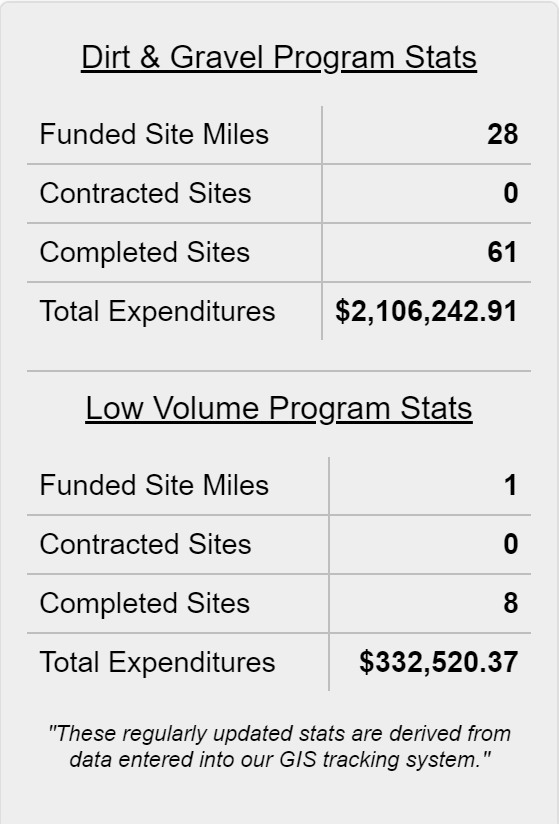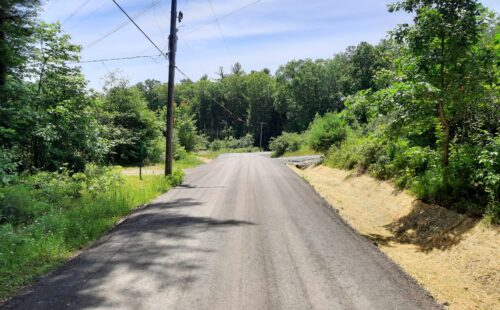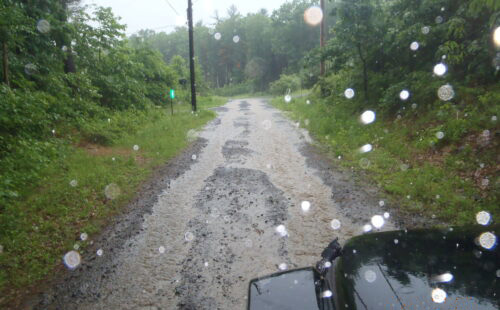
Dirt, Gravel, and Low Volume Road Program
Program Information
The Dirt, Gravel, and Low Volume Road Program began in 1997 from an initiative by Trout Unlimited in conjunction with Penn State University’s Center for Dirt and Gravel Roads, the State Conservation Commission, and local Conservation Districts. The goal of the program is to reduce pollution in nearby streams while improving the rural road network.
One of the qualification requirements of the Program is to direct funding to “worksites” where road runoff is affecting the water quality of the nearby stream.
Whittaker Farm Road – After & Before Comparison
Eligibility Requirements
Public entities that own public roads in Pennsylvania that are open to public vehicle traffic are eligible to apply to districts for Program funding. Eligible entities include municipalities, PA Department of Transportation (PennDOT), PA Fish and Boat Commission, County and other Government entities, and the Department of Conservation and Natural Resources (DCNR).
The person who is in charge of the work plan development, as well as project implementation from the entity that applied for funds, must have attended environmentally sensitive maintenance (ESM) training within the past five calendar years to become ESM certified.
For more information regarding the Program, please contact the District at 570-226-8220.
Additional information can also be found by visiting the PennState Center for Dirt and Gravel Road Studies website.
Are you interested in applying for funding?
Chapter 5 of the DGLVR Administrative Manual is intented to serve as a primer and guide for potential applicants. Please also communicate with the District in advance of applying.


Invasive species cost the US over 120 billion dollars each year. These species impact tourism, transportation, resource use, water withdrawals and much more.
Never move animals or plants from one area to another. Don’t move firewood, soil, or other items that might contain insects or microbes.


